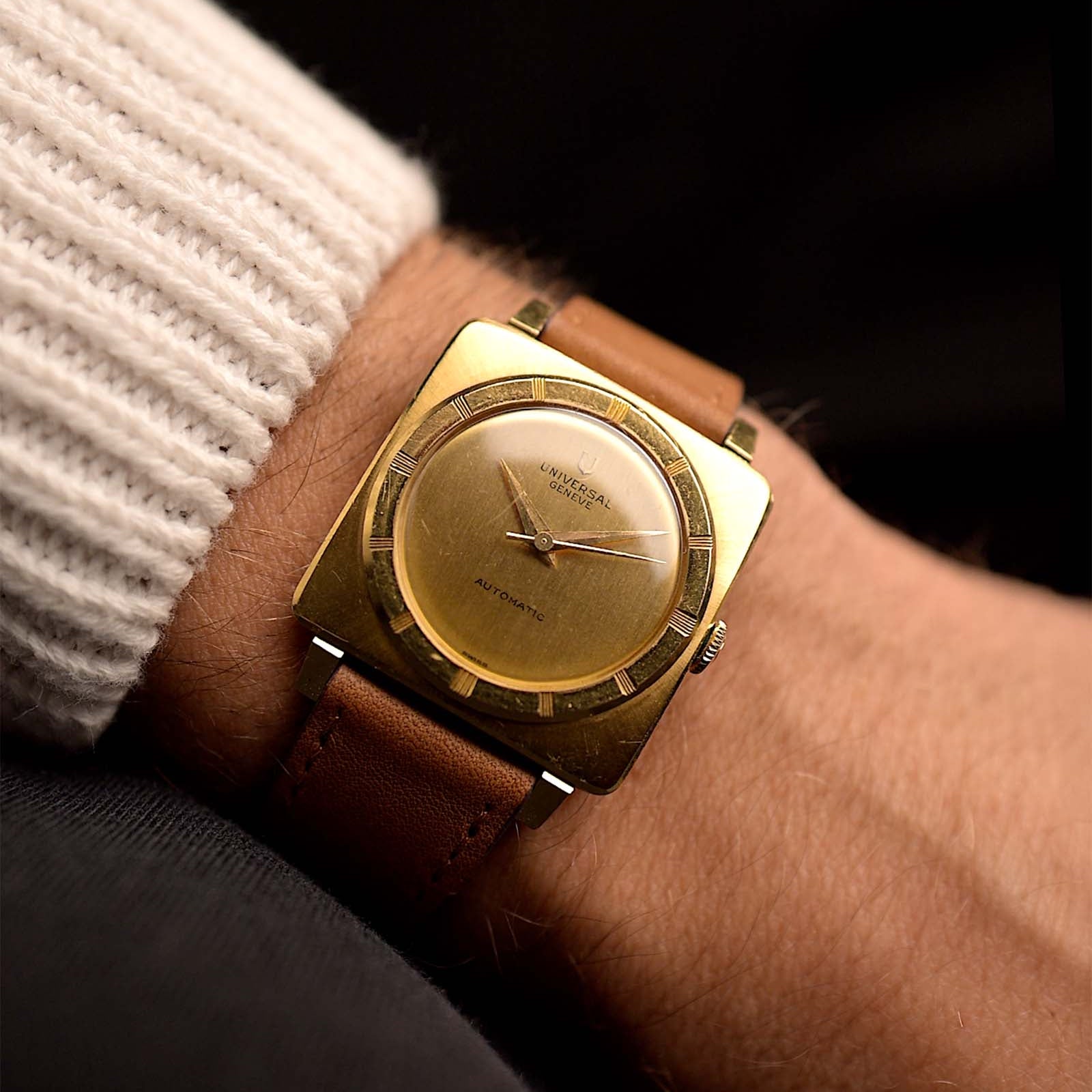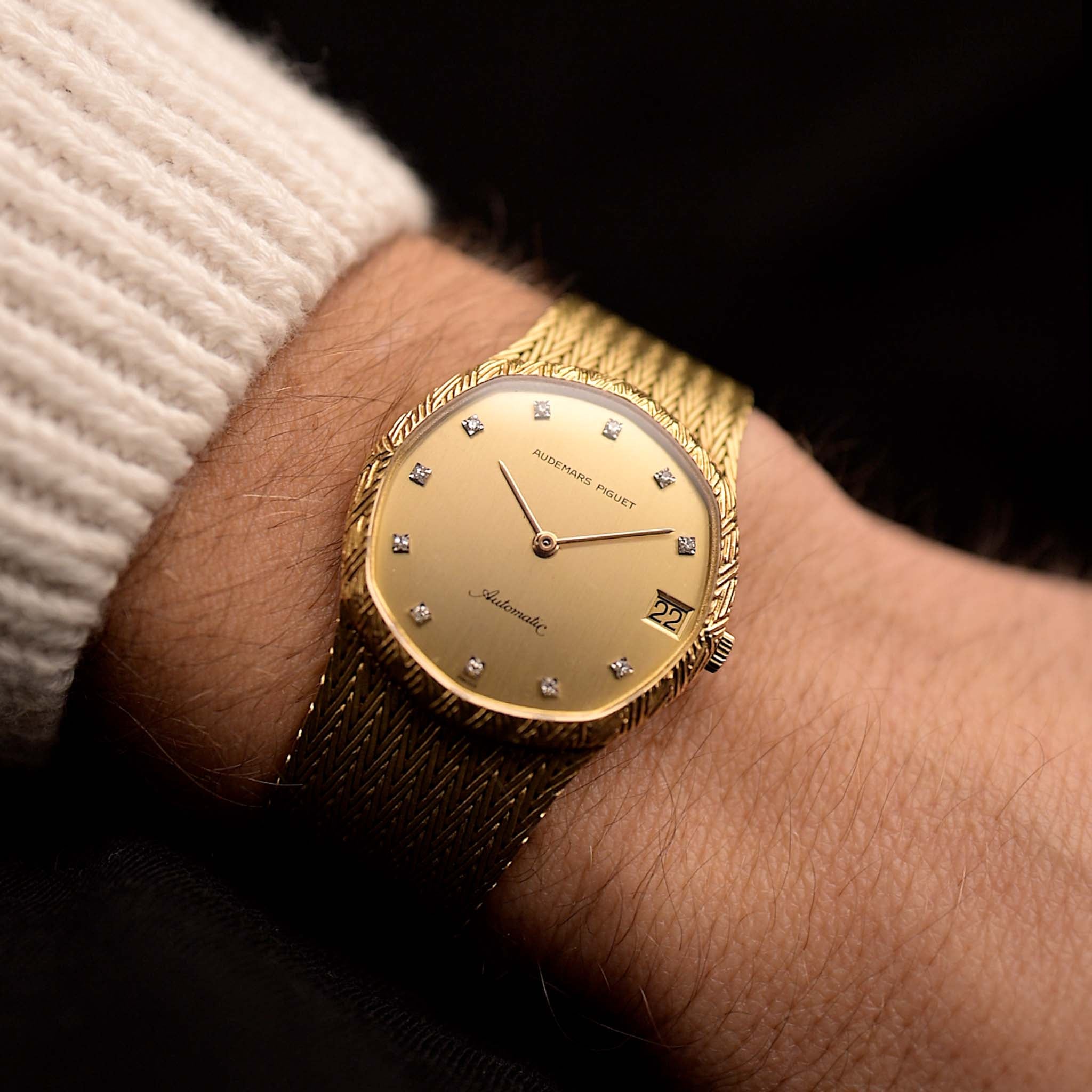It's hard to imagine that there was a time when all timepieces were very delicate and fragile. When you look into a watch boutique these days it appears almost normal that watches have to be 10ATM water resistant, shock resistant, have shatter proof sapphire glass... How luxurious. That's why I find it fascinating to take a look back at the beginnings, when watches just started to become more durable and every bit of new technology meant several new years of lifetime to a watch. What were the first steps in this long journey to resistance?
September 06, 2022
Pivotal Dress Watches - Cartier Tank

Marcus Siems @siemswatches
Collector, Author, Data Analyst
Urban Chic The Cartier Tank is a quite classic dress watch, isn't it? But right now it's a genre-clashing watch: The design is over 100 years old but it's one of the most recognizable shapes of our time. You might see at gala dinners but more frequently on the wrist of hoody-wearing Millennials. It has become the go-to piece for the new high-not-high fashion urban lifestyle. The Tank right now is probably as New York as it is Paris. So how did we get here? How did the Tank go from a very sophisticated timepiece to a modern fashion-legend, adjustable to every real-life runway?
What makes a watch a pivotal dress watch? To put a long story short - The Cartier Tank is an object that has transcended its horological necessity. It's no longer "only" a watch, it's a phenomenon even larger than many Swiss watch brands of our time (imho). We're looking here at a piece of history.
The Evolution of the Cartier Tank: A Century of Iconic Design
 From Paris to New York - the Tank is nowadays part of the attire of many young professionals and fashionistas. This example is a Cartier Tank Normale, a 1960 execution, sold at Phillips New York (Dec. 2021).
From Paris to New York - the Tank is nowadays part of the attire of many young professionals and fashionistas. This example is a Cartier Tank Normale, a 1960 execution, sold at Phillips New York (Dec. 2021).
But before we get ahead of ourselves let's have a closer look at the watch itself. First off is of course the case, it's a rectangular shape with a square dial. An outline that famously was envisioned by Louis Cartier in 1917, inspired by the Renault FT-17 tanks of WW1[1-5]. If that's not emblematic enough we can further add the full Roman Numerals, the Sword hands, the "chemin de fer" minute track and the blue Saphire crown. There you go, legendary.
But that's where we are at right now. From the first "serially" produced Tank in 1919 (half a dozen to be exact) to the legend this watch has become nowadays there's quite a century of history missing in between. The question is; How did this design become so symbolic?
 Building on the blueprint: This is a rare Tank Cintree from the 1930s with luminous arabic numerals. Already in these early days Cartier has been extending the template Tank design to several variations. This piece was sold at Phillips Geneva (Nov. 2021).
Building on the blueprint: This is a rare Tank Cintree from the 1930s with luminous arabic numerals. Already in these early days Cartier has been extending the template Tank design to several variations. This piece was sold at Phillips Geneva (Nov. 2021).
Unveiling the Production Journey of the Cartier Tank Watch
Here, we gonna take a look at the production numbers of the Cartier Tank from 1919 to 1969*. It's the first 50 years of its existence and the most crucial ones for its contemporary success.
 Figure 1. Distribution of produced Cartier Tank watches between 1919 to 1969[6-7].
Figure 1. Distribution of produced Cartier Tank watches between 1919 to 1969[6-7].
What's striking is that up until the 1960s only a handful of Tank watches were produced each year. We are talking about extremely low figures here, never exceeding 100 pieces annually, excluding the late 1920s. In sum, that makes less than 1000 pieces before 1943, and it took another 20 years to hit the 2000-milestone. This is rare! Adding on top that most of these elegant gems won't be around anymore, finding an early Cartier Tank in great shape becomes nearly impossible.
But let's bring out the loupe and disentangle these numbers more. We see that particularly in the wild 1920s Cartier was expanding their production drastically. Looking through the archives we can also see the first Tank variations occur during that period. In 1921 Cartier introduced the Cintree (elongated case), followed by the Chinoise ("Chinese temple") one year later and the Guichets (Jumping Hour) in 1928[8].
 Speaking of old Hollywood glory - This fine specimen sold at Christie's Geneva auction this Spring. And here is where it gets really cool: Gifted from the MGM executives to Harry Portman on opening of "The Empire" theatre London 1928.
Speaking of old Hollywood glory - This fine specimen sold at Christie's Geneva auction this Spring. And here is where it gets really cool: Gifted from the MGM executives to Harry Portman on opening of "The Empire" theatre London 1928.
With more and more variations we can conclude that Cartier had a lot of confidence in their star collection and the watchmaking branch of the jewelry empire as a whole. Most likely fostered by other pop-cultural events like the 1926 movie "The Son of the Sheik"[1-5] the late 1920s mark a central point in the Tanks popularity. It's the watch for a successful and stylish generation.
But the great depression hits the watch market as much as it hits everywhere. From 1930 onward Cartier never again produced as many watches until over 30 years later. Yet the status of the brand never waned. Most likely because celebrity endorsement kept coming in all throughout the years. The Hollywood elite from Stewart Granger, Bing Crosby, James Cagney, Ingrid Bergman, Cary Grant, Clark Gable, Gary Cooper as well as Humphrey Bogart (and so so many more) all gravitated towards some Tank variation and thus edged its silhouette into the annals of cultural history[1].
 Another variation: A Tank Etanche (1931) probably introduced in the exact same year. This example was sold at Phillips Geneva (Nov. 2019) with provenance - the watch was gifted to Count Haugwitz-Reventlow by Barbara Hutton.
Another variation: A Tank Etanche (1931) probably introduced in the exact same year. This example was sold at Phillips Geneva (Nov. 2019) with provenance - the watch was gifted to Count Haugwitz-Reventlow by Barbara Hutton.
Yet still Cartier didn't ramp their production until the 1960s, or did they? The question here is whether Cartier generally produced watches in very limited numbers or whether it focused on other models. In other words, what's the production of Tank watches relative to all other collections?
Rare and Timeless: The Cartier Tank's Early Years and Limited Editions
 Figure 2. Historic Cartier Tank Production Numbers relative to the overall production (in %)[6-7].
Figure 2. Historic Cartier Tank Production Numbers relative to the overall production (in %)[6-7].
Interestingly, the overall Cartier numbers seem to be quite drastically tied to the production numbers from the Tank. Whenever there's more Cartier watches produced in general, the proportion of Tanks spikes as well. This is true during the 1920s when Tank watches make up over 20% of the total production.
Even more intriguing are the developments from the 1960s onwards. As Cartier is after 30 years revamping its production to new heights, the Tank appears to become its flagship. Over 50%(!) of all produced Cartier watches in 1969 were Tanks. The collection has become the figurehead during the renewed growth of the brand.
 Variation is a huge factor in the success story of Cartier's Tank - there might be a standard, but the little and not so little details were all varied throughout the years. Here, a stunning 2000s Tank Chinoise in Platinum, sold at Phillips Geneva (Jun. 2020).
Variation is a huge factor in the success story of Cartier's Tank - there might be a standard, but the little and not so little details were all varied throughout the years. Here, a stunning 2000s Tank Chinoise in Platinum, sold at Phillips Geneva (Jun. 2020).
From the 1960s on - and particularly after the change of ownership in 1976 - Cartier is strengthening their grip on the mass market. A Cartier watch was no longer something unattainable for the average watch enthusiast. The Hollywood myth became a cultural star and the phenomenon we know it is today. A whiff of stardom for everyone.
The Cartier Tank is as such a pivotal dress watch as it gathered a cult-like following even when the actual watch wasn't available. It truly transcended its metal outline to become the symbol of old Hollywood glory and modern Millennial revolt against classic fashion-oriented castes. It's cool because it's different yet versatile - always was and always will be.
* The data is based on the Cartier Paris numbers, the production for the London Cartier pieces are - as far as I know - not reported.
References
[1] History of The Cartier Tank; Freddie Anderson, The Rake;
https://therake.com/stories/the-history-of-the-cartier-tank/
[2] Cartier Tank: A History; Rachel Butler, Crown & Caliber;
https://blog.crownandcaliber.com/cartier-tank-a-history/
[3] 100 not out: the full history of the Cartier Tank; James Dowling, Esquire;
https://www.esquire.com/uk/watches/a33818670/cartier-tank-history/
[4] 18 Things You Didn't Know About the Cartier Tank Watch; Sam Dangremond, Town & Country;
https://www.townandcountrymag.com/style/cartier-tank-watch-history/
[5] Luxury Lineage: A Brief History of the Cartier Tank; Michael Solomon, Forbes;
https://www.forbes.com/sites/msolomon/2017/10/03/luxury-lineage-cartier-tank-watch/
[5] Luxury Lineage: A Brief History of the Cartier Tank; Michael Solomon, Forbes;
https://www.forbes.com/sites/msolomon/2017/10/03/luxury-lineage-cartier-tank-watch/
[6] The Cartier Codex; Franco Cologni & Cemre Paris;
[7] The Pantheres First Steps - Early Cartier; Marcus Siems, Goldammer Vintage Watches;
https://goldammer.me/blogs/articles/history-early-cartier
[8] A Guichet; Erik Gustafson, The Hairspring;
https://hairspring.com/finds/modern/cartier-tank-a-guichet/
All rights on text and graphics reserved to the Author.




























Leave a comment